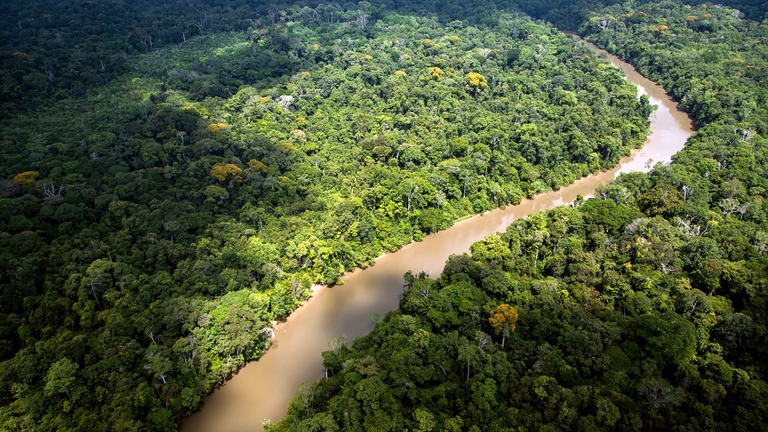
The Amazon became an alternative classroom during the pandemic. Now, the educational forest in Batraja, Bolivia, lives on to teach children and adults the value of nature.
Secondo un nuovo studio pubblicato su Science Advances i paesaggi forestali intatti stanno scomparendo ad un ritmo insostenibile.
Pristine, verdant areas extending as far as the eye can see, home to countless native species. These areas, greater than 500 square kilometres, are referred to as intact forest landscapes (IFL).
Besides being of astonishing beauty, these areas have an inestimable value for storing carbon dioxide, are home to more than 80 per cent of animal and plant species, regulate hydrological regimes and provide precious ecosystem services. Yet, we’re destroying pristine forest landscapes at an appalling rate. A new study published in the journal Science Advances shows that 7 per cent of pristine forests have been wiped out between 2000 and 2013. These areas risk disappearing from at least 19 countries over the next 60 years. In fact, a forest landscape is no longer considered “intact” if roads fragment it.
The sorrow generated by this decline emerges from the words of one of the study’s co-author, Lars Laestadius: “These landscapes represent some of the last portions of the Earth that are not significantly affected by human influence. As we lose these, we lose something that is bigger than ourselves”.
Researchers used satellite data to document the changes global intact forest landscapes went through from 2000 to 2013. In 2000 these covered a total surface of 12.8 million square kilometres but this was drastically reduced – by 7.2 per cent – due to human-related activities that altered and fragmented them.
More than 50 per cent of intact forest loss occurred in three countries alone: Russia, Brazil and Canada. In general, however, tropical countries tend to be the most affected. These losses don’t necessarily mean that forests are being wiped out completely. Instead, they’ve been fragmented into smaller portions. However, the rate at which we’re losing forests is increasing. The study shows that the rate of reduction in intact forest between 2011 and 2013 tripled compared to 2001.
The main cause of a reduction in pristine forests could be linked to the relentless development of human activities. The study shows that 14 per cent of forest loss was linked to activities that directly altered their landscape including deforestation, while others have been fragmented by the construction of roads, buildings and development of agriculture.
The causes of a reduction in pristine forests vary from one country to another, thus requiring targeted solutions. The study shows that protected areas “generally fared better all over the world”, suggesting that establishing nature reserves can be an effective way to halt this phenomenon.
Siamo anche su WhatsApp. Segui il canale ufficiale LifeGate per restare aggiornata, aggiornato sulle ultime notizie e sulle nostre attività.
![]()
Quest'opera è distribuita con Licenza Creative Commons Attribuzione - Non commerciale - Non opere derivate 4.0 Internazionale.
The Amazon became an alternative classroom during the pandemic. Now, the educational forest in Batraja, Bolivia, lives on to teach children and adults the value of nature.
Our species took its first steps in a world covered in trees. Today, forests offer us sustenance, shelter, and clean the air that we breathe.
Bangladesh suffered widespread damage as a result of Cyclone Amphan. Yet the Sundarbans mangrove forest acted as a natural barrier protecting the country from further destruction, as it has done countless times before.
On top of a 2.4 million dollar compensation, the indigenous Ashaninka people will receive an official apology from the companies who deforested their lands in the 1980s.
The tapir was reintroduced into Brazil’s Atlantic Forest, the country’s most at-risk ecosystem. The species can play a key role in the forest’s recovery.
Forests are home to 80 per cent of the world’s terrestrial biodiversity. This year’s International Day of Forests highlights the urgent changes needed to save them.
After a legal battle that lasted two years, Indonesia’s Supreme Court has revoked the permit to mine for coal in the forests of South Kalimantan in Borneo.
The list of human and animal victims of the Australia wildfires keeps growing – one species might already have gone extinct – as the smoke even reaches South America.
Areas where the FARC guerrilla used to hold power in Colombia have faced record deforestation. Farmers cut down trees, burn land and plant grass for cows. Because, “what else can we do for a living here in the Colombian Amazon”? An intimate report from the heart of the felled forest in Caquetá.










